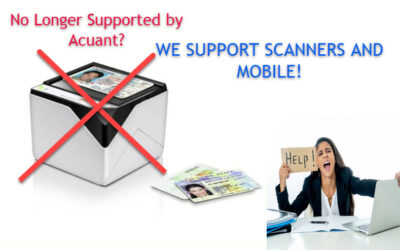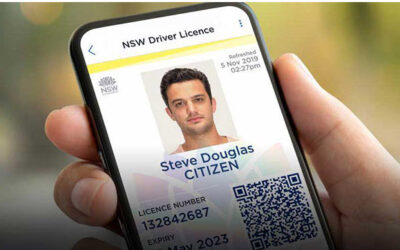The Importance of Healthcare Claim Processing
Processing Medical Insurance claims such as HFCA (CMS 1500), UB’s, Dental, and other forms is a critical part of healthcare reimbursement, and can be done manually or with the help of software. Manually inputting this information creates a bottleneck in any company. When the numbers of healthcare claims are low, manual processing is a go-to solution. However, if you are reading this blog, its likely because you have surpassed a manageable volume where you can do it manually or are just sick and tired of the repetitive work.
The process of healthcare claims processing starts when a patient’s doctor submits a claim to an insurance company. The insurance company then processes the claim and sends it back to the doctor for payment.
Healthcare claims processing is important because it allows doctors to get compensated for their services, which in turn enables them to continue providing quality care to their patients. Historically manual entry is not an efficient process, which is where OCR software comes to the rescue!
What is OCR Software?
Optical character recognition (OCR) is a process of scanning document images, converting them into text, and putting the information in corresponding logical fields for automatic processing. OCR software can be used in many different ways. It can be used to convert scanned documents into editable formats, or by people who are visually impaired and need to read documents in a different way. OCR software can even identify text in images, including text hidden in an image.
OCR data capture has come a long way and is the best solution for the automated medical claim processing. Not only does the system automatically upload scanned documents, it classifies a document, points the user to low-confidence characters it may have misread, and applies business rules and database lookups that support keying instructions.
The technology is also used to automate data capture for invoices, mailroom functions such as automated sorting of packages, data comparison projects, and much more.
How OCR Software Solves Healthcare Claim Processing Issues
One of the main benefits of OCR software is that it can help streamline claims processing. Healthcare providers are under a lot of pressure to process claims as quickly and accurately as possible. Some forms even have a 24-hour SLA that must be met. This is due to the need of keeping up with the demand for services while also maintaining high levels of customer satisfaction.
When a healthcare provider uses OCR software, it can help them ensure success for three main functions: improve accuracy, reduce the turnaround time, and ensure that customers are happy with the service they receive.
Optical Character Recognition (OCR) software and imaging tools have made it possible for these documents, previously printed on paper, to be captured electronically for easy handling, storing, and transmitting. OCR allows the management of patient information to be quick and accurate. As a result, medical professionals can provide better care, increase productivity, and reduce paperwork. Through a web browser, OCR software can be accessed online and integrated into operations.
The OCR software gives healthcare providers a way to accurately manage pain points, measuring the patient’s acuity by taking a look back at their previous visits and then suggesting what they should be experiencing based on the data collected. In addition, the software allows them to keep up with their workload so they can improve efficiency and service quality.
Benefits of Going Paperless in a Healthcare Setting
Paperless offices and healthcare facilities are becoming increasingly common. There are many benefits to going paperless, but it’s important to think about the security risks as well.
In a paperless office, records are digitized and stored on a central server or in a cloud-based system. This means that there is no chance of them getting lost or forgotten in a filing cabinet. It also makes it easier for people to access records from anywhere they have internet access.
The use of electronic medical records has been shown to improve patient care by making it more efficient and effective. This is because the information is more accessible just by logging in to a system and doing a quick search for the needed information.
There is a wide range of benefits that have been derived from the use of electronic medical records. The ability to better serve patients’ needs by providing them with more convenient access to their medical history, as well as linking patient care and treatment facilities, has helped the health care industry improve its overall performance.
The convenience and ease of use that online services provider is a critical factor that may influence patient behavior, as well as the efficiency of healthcare organizations. If you are unable to access your health care provider either in person or via phone or email, now is a time when it’s helpful to have some sort of online connection with them.
By using OCR software, medical professionals can work remotely and submit data online for healthcare claims processing. With electronic format, documents can be transmitted much more quickly and smoothly in proper 837 output formats after it has been processed. OCR Systems have the power to export information to any database or format such as CSV, XML, JSON, and many other formats. The information can be exported directly to a document management system.
Data capture enhances customer service
There are often delays with medical insurance claims, and these delays are notorious for ruining a customer’s experience and timely payments. A delay in payments can cause unnecessary stress and damage a customer’s faith in the organization. Many of these delays are caused by inaccurate information on claims, lost forms, or even a backlog of claims.
Through optical character recognition (OCR) and digitization, sources of delay are greatly reduced and even eliminated. Scannable PDF documents can be created for all forms, with cataloging and indexing happening automatically based on the information contained in the forms or the type of forms. Advanced business rules pre-programmed into the OCR software allow data captured on CMS 1500 or UB04 forms to be classified, verified for low-confidence characters, and vetted. Reducing the time spent on manual re-keying and reducing staff workload and processing time.




